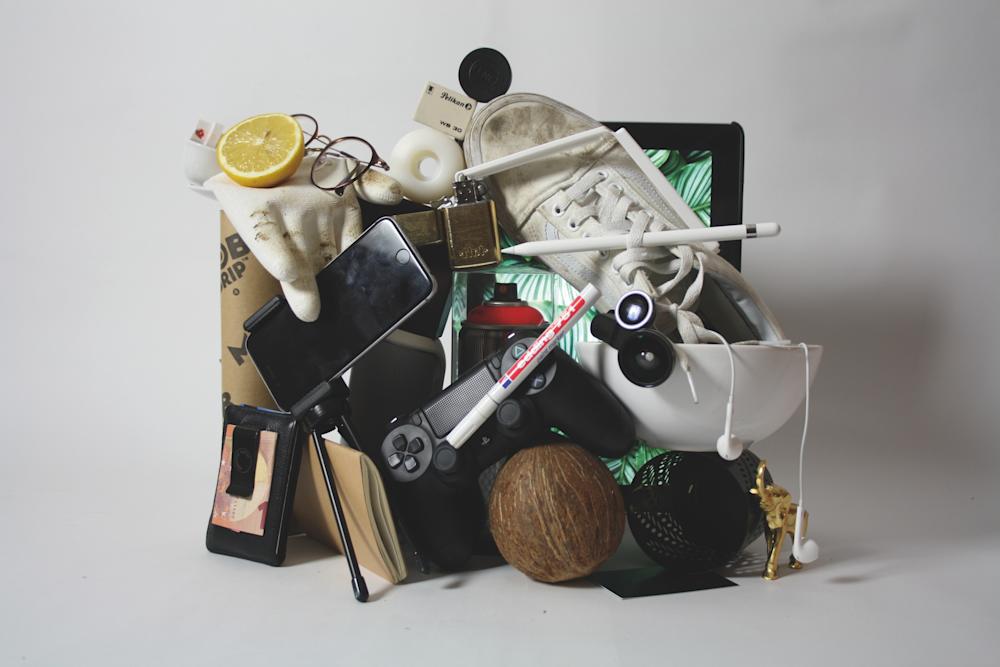
For a while there, things fell out of fashion. They reluctantly shed some of the glamour they once held for designers and their clients. Why? Design had seemingly produced too many products, too many unnecessary products. The exhaustion was well expressed by legendary designer Deiter Rams. “We need to deal with our resources differently, in terms of how we waste things,” he said in Fast Company. “We have to move away from the throwaway habit. Things can, and must, last longer. They must be designed so that they can be reused. We need to take more care of our environment.”
Apart from sustainability, both industry and design schools discovered that products themselves had limited lifecycles. Services, however, were expansive and longitudinal. If you could create and maintain a service ecosystem around a thing, build a relationship with the people who owned or used the thing, then you could forge more robust business models. And then suddenly, in the early years of the 21st century, we were virtually surrounded by all kinds of highly scalable tech businesses, ones that turned huge profits with only a small workforce and some brilliant machines.
The smart money, in the design world, wasn’t on the next tea kettle or electric razor, but on huge corporate service offerings or creating the UX for big digital platforms.
Then the Internet of Things stomped into town, like Godzilla on a wicked bender, and suddenly stuff mattered again. “It used to be that things had computers in them,” writes Bruce Schneier in Click Here to Kill Everybody. “Now they are computers with things attached to them.” When the world realized that soon every last object would be forcibly impregnated with a chip… the idea of ID became necessary again.
How will the things of the Fourth Industrial Revolution be different from those of the Third? How will the new school of designers distinguish themselves from their predecessors? Will they have different considerations, tools, responsibilities? It’s still the early days, but to get a read on the situation, I talked to a number of colleagues. Fortunately, they talked back.
Eric Bogner, Senior Director, Design Practice
As a designer and lover of objects, it is important to develop more intuitive and instinctual, even inspirational, connections with the connected things around us.
We’re now creating experiences on an intimate and human scale through form, materials, and interaction, thinking about the objects we bring into the world as part of an interconnected platform. The physical elements are the critical players providing the tangible experience that connects the physical interaction to the digital. These physical elements help us push beyond the glass box interface, to humanize the experience and bring more of a direct relationship with and trust in the tangible objects we control. This is the emotional power of the physical, and we now value the physical object more and focus on how objects deliver meaning to people. Starting at the touchpoints and scaling outwards, we’re connecting the tangible experience back to the design intent, infusing desire into objects that resonate into the experiences around them. This relationship between people and things is what gives an object meaning and what distinguishes a product that a person brings into their daily routine from a piece of “junk.” I’m excited about connecting digital activities to physical things and creating a future in which people will put away their screens and start interacting directly with the world around them. As a designer and lover of objects, it is important to develop more intuitive and instinctual, even inspirational, connections with the connected things around us.
To be able to deliver these complex design attributes, all designers are becoming hybrids, career professionals, blending skills that were once thought to be mutually exclusive. As UI, UX, ID, and engineering are becoming intertwined, designers are working across disciplines, understanding the bigger picture of human beings, business, and technology. A lot of the design solutions to today’s complex interconnected challenges are giving way to things that are not as see-able, and industrial designers are well suited in blending their digital and physical capabilities to create objects that we can experience with multiple senses. As design software and AI develop, designers are becoming curators as much as designers, quickly reviewing a product’s many possible performance tradeoffs and deciding on the right recipe of ingredients for the given context. I see this as a bridge to the idea of eventually designing more dynamic objects that change within different contexts and grow with their users. This is the next holy grail, creating physical objects that adapt like digital interactions to the changing needs of people, quickly transforming and optimizing multiple parameters at once.
Jonathan Lupo, VP, Experience Design
The Fourth Industrial Revolution is all about ambient experience services. We already know that access equals ownership, and that access will, in this new age, unlock experiences around us without us having to initiate them. Imagine a a world of uber-convenience in which a mixed reality world plays out in front of you, through an advanced understanding of very personal dimensions of your psyche, physiology, and your behavior, without you ever having to lift a finger to swipe across glass. Your identity, at the airport, is associated with your biometrics, enabling uninterrupted passage through security checks. Personal meals are prepared for you based on your health conditions and preferences, and delivered to you, hot and fresh, at mealtime. Your emotional state will trigger immersive, television-like entertainment experiences, without the TV being a necessarily physical “thing.” In short, the data generated by your daily routine and biofunction will be collected and analyzed, in real time, and artificial intelligence will orchestrate and deliver services of everyday convenience to you, just in time.
Ambient services require deep sensing tech, however… the kind that some will have difficulties with, from a privacy perspective. Inevitably, this revolution will have its advocates and detractors. Ultimately, however, consumers will “opt in” to the convenience of having exciting, mixed reality experiences triggered by mood, or lifestyle, or other facets of hyper-personalized insights, collected by sensors that we are wearing, or don’t even know we are engaging with, or implanted into our very bodies.
While the previous era of smart products harkened mashups of toasters with embedded smartphones, the future era of connected things suggests subtle sophistication through form, feedback, and finishes.
Tim Tocci, Senior Product Designer
1.
Where previously the relationship between atoms and bits has been perceived in “either/or” contention, especially in realms such as investing, the emergence of IoT suggests a growing desire for symbiotic integration of data and devices residing within an interconnected ecosystem. The ecosystem approach enables the decoupling of smart devices from computing power and its associated volumes and complexity. This enables a pure expression of the artifact which in turn leverages existing mental models to improve usability through perceived simplicity.
2.
Designers of connected artifacts endeavor to elevate their product experiences by embodying the attributes “smart” and “simple.” While the previous era of smart products harkened mashups of toasters with embedded smartphones, the future era of connected things suggests subtle sophistication through form, feedback, and finishes.
Form:
Pure geometry embracing primitive shapes and volumes such as cylinders and the ever-popular pill extrusion suggest ease of interaction despite advanced digital capabilities.
Feedback:
Minimal and contextual communication of device data and status in lieu of expansive touchscreens limits cognitive loading and reinforces a simplified aesthetic.
Finishes:
The nuanced integration of generative patterns for grip and ventilation promote functionality without distracting from the emotional engagement established by the form.
3.
The digitization of things requires a more holistic design approach that transcends traditional silos of physical product (i.e. industrial) design and digital design. Blurring these boundaries entails interactive prototyping where designers explore how the physical embodiment harmonizes with digital interactions in light of the overarching experience objectives as seen in the case of the iluminage skin smoothing laser or the Medela Sonata™ smart breast pump. Designers prototyping these experiences benefit from some familiarity with coding, which also promotes generative design refinement. Preliminary studies may also benefit from virtual environments such as gravity sketch, especially where scale and complexity may strain budgets and timelines.
The tension between the freedom of bits in the virtual world and the constraints of atoms in the physical world also speaks to the rebound of tangible things and the responsibility of designers to build trust. In the same way that shoppers trust the purity of organic products and the absence of artificial ingredients, users expect artifacts to embody natural materials and interactions that meld seamlessly with everyday life as illustrated by the Future of Parenting vision we crafted for Fisher-Price.
Yev Galper, Head of Innovation as a Service
The bottom line is that most companies, at least for-profit ones, are interested only in two things—increasing revenue and reducing costs. Everything else, like improving customer experience or creating predictive analytics are just specific tactics that help achieve these two overarching strategic goals. Now with the advancement of such emerging technologies as robotic process automation, machine learning, artificial intelligence, augmented reality, virtual reality, blockchain, IoT, edge computing, and 5G, organizations have many more tools at their disposal to enhance existing and implement new products and services. In order to take advantage of edge computing and IoT, things will need to become not only smarter, but also connected in the networks. At the same time, 5G will enable off-loading a lot of intense computational processing to the cloud and still generate awesome customer experience. Technologies, though, are only enablers rather than solutions themselves. Success and adoption of specific products and services depends on ROI for organizations and the value that they provide for end users.




